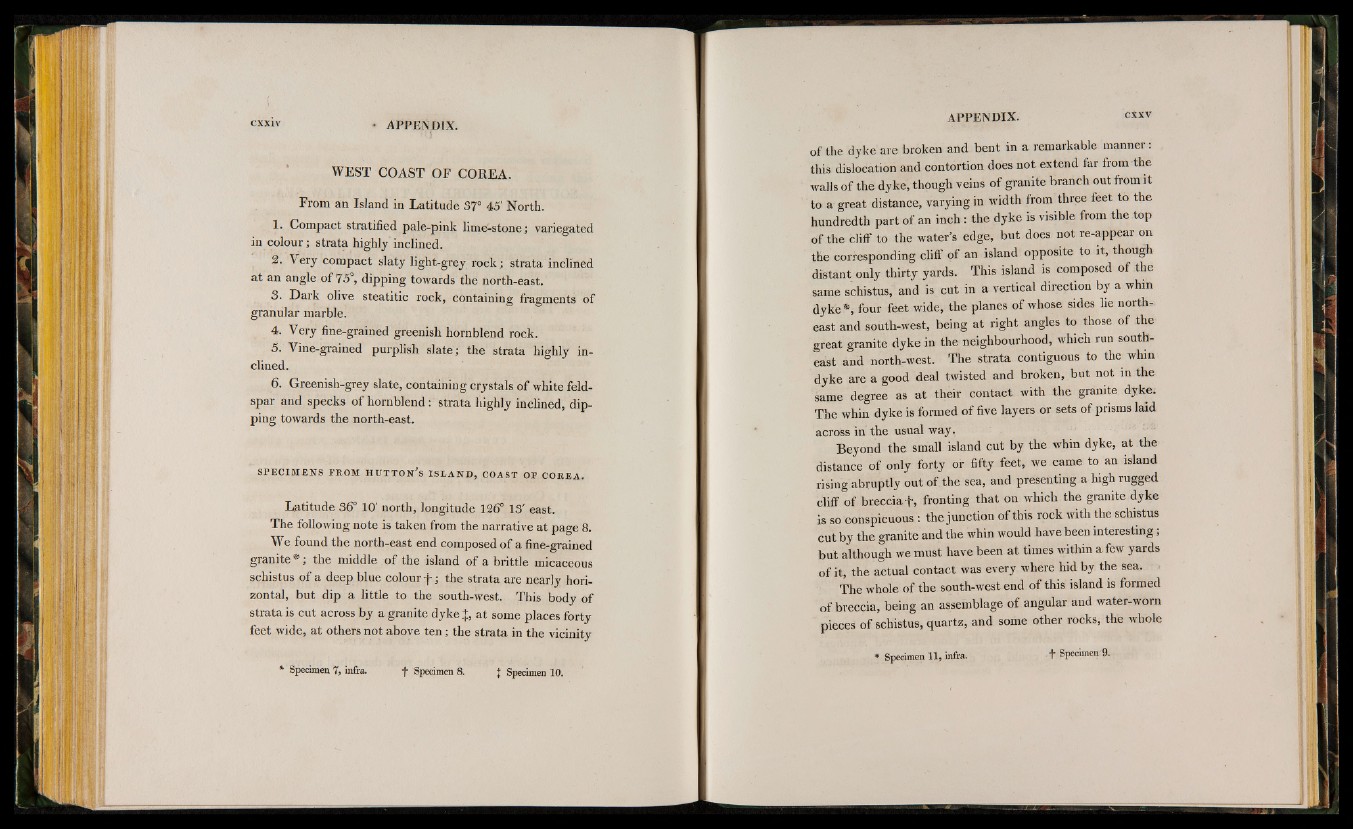
WEST COAST OF COREA.
From an Island in Latitude 37° 45' North.
1. Compact stratified pale-pink lime-stone; variegated
in colour; strata highly inclined.
2. Very compact slaty light-grey rock; strata inclined
a t an angle of 75°, dipping towards the north-east.
3. Dark olive steatitic rock, containing fragments of
granular marble.
4. Very fine-grained greenish hornblend rock.
5. Vine-grained purplish slate; the strata highly inclined.
6. Greenish-grey slate, containing crystals of white feldspar
and specks of hornblend: strata highly inclined, dipping
towards the north-east.
SPECIMENS EEOM HUTTON’s ISLA N D , COAST OF COREA.
Latitude 36° 10' north, longitude 126° 13' east.
The following note is taken from the narrative at page 8.
We found the north-east end composed of a fine-grained
granite*; the middle of the island of a brittle micaceous
schistus of a deep blue colour f ; the strata are nearly horizontal,
but dip a little to the south-west. This body of
strata is cut across by a granite dyke +, a t some places forty
feet wide, at others not above te n ; the strata in the vicinity
* Specimen 7, infra. f Specimen 8. { Specimen 10.
of the dyke are broken and bent in a remarkable manner:
this dislocation and contortion does not extend far from the
walls of the dyke, though veins of granite branch out from it
to a great distance, varying in width from three feet to the
hundredth part of an in ch : the dyke is visible from the top
of the cliff to the water's edge, but does not re-appear on
the corresponding cliff of an island opposite to it, though
distant only thirty yards. This island is composed of the
same schistus, and is cut in a vertical direction by a whm
dyke*, four feet wide, the planes of whose sides he northeast
and south-west, being a t right angles to those of the
great granite dyke in the neighbourhood, which run southeast
and north-west. The strata contiguous to the whin
dyke are a good deal twisted and broken, but not in the
same degree as a t their contact with the granite dyke.
The whin dyke is formed of five layers or sets of prisms laid
across in the usual way, -
Beyond the small island cut by the whin dyke, a t the
distance of only forty or fifty feet, we came to an island
rising abruptly out of the sea, and presenting a high rugged
cliff of breccia j~, fronting that on which the granite dyke
is so conspicuous : the junction of this rock with the schistus
cut by the granite and the whin would have been interesting;
but although we must have been at times within a few yards
of it, the actual contact was every where hid by the sea.
The whole of the south-west end of this island is formed
of breccia, being an assemblage of angular and water-worn
pieces of schistus, quartz, and some other rocks, the whole
* Specimen 11, infra. -f* Specimen'9.